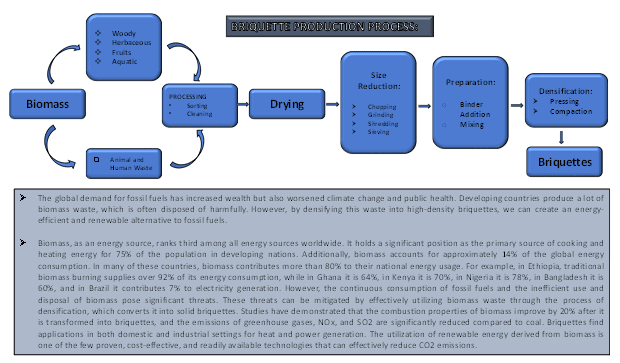Author: Himanshu Patni
26 June 2024
According to a new report by Univdatos Market Insights, the Biomass Briquette Fuel Market is expected to reach USD 1375.35 Million in 2030 by growing at a CAGR of 7.25%. Furthermore, the escalating concerns surrounding climate change have compelled governments to take aggressive action to reduce carbon emissions. Fossil fuels, such as coal and oil, are major contributors to greenhouse gas emissions, leading to the exacerbation of global warming. The burning of biomass briquettes, on the other hand, has significantly lower carbon emissions, making it an attractive option for policymakers aiming to meet emission reduction targets. For instance, according to the International Energy Agency (IEA), renewable energy sources contributed to an estimated 27% of global electricity generation in 2020, with biomass playing a significant role. Moreover, biomass briquette fuels are derived from organic waste materials such as agricultural residues, wood waste, and forest residues. This renewable energy source offers a sustainable alternative to fossil fuels as it helps reduce dependence on depleting natural resources. Additionally, biomass briquettes contribute to waste management by recycling organic waste that would otherwise end up in landfills, further enhancing their appeal.
The report suggests that the rising climate change concerns and growing government efforts in curbing this issue are some of the major factors driving the Biomass Briquette Fuel Market during the forthcoming years. Biomass briquette fuel refers to a compacted form of organic materials that are processed into briquettes for efficient and sustainable energy production. It is a renewable energy source derived from biomass waste, such as agricultural residues, forestry residues, sawdust, and other plant-based materials. These materials are compressed under high pressure without any binding agent to form solid briquettes. The biomass briquettes serve as a potential substitute for traditional fossil fuels like coal, oil, and natural gas. They are eco-friendly and carbon-neutral fuel options as the carbon dioxide emitted during combustion is equivalent to the amount absorbed during the growth of the biomass source. Biomass briquettes possess numerous advantageous features, contributing to their popularity as a fuel source. They have a high energy content, like traditional fuels, making them suitable for use in various applications like heating, cooking, and electricity generation. Their uniform size and shape Moreover, biomass briquettes aid in reducing waste management issues by utilizing agricultural and forestry residues that would otherwise be disposed of through less sustainable means like open burning or decay. By converting these waste materials into valuable fuel, biomass briquettes contribute to cleaner emissions, reduced deforestation, and a lower carbon footprint. They also make them convenient for handling, storage, and transportation.
For More Detailed Analysis in PDF Format, Visit- https://univdatos.com/get-a-free-sample-form-php/?product_id=55311

Figure 1: Technical and Economic aspects of Biomass Briquetting
The manufacturing plant industry predominantly utilizes this form of fuel and holds most of the market share. Here are several factors that contribute to this domination such as government initiatives and policies. Many governments across the globe have introduced favorable policies and incentives to promote the use of renewable energy sources, including biomass briquettes. Supportive regulations, tax incentives, and subsidies encourage manufacturing plants to choose biomass briquettes as a sustainable fuel option. For instance, in 2021, the Ministry of Power of India partnered with the National Thermal Power Corporation (NTPC) and launched a project in Samarth, supporting the use of biomass. Officials from CPCB (Central Pollution Control Board) and PPCB met on 6 October, with CPCB announcing a fund worth USD 6 million to promote the manufacturing of pellets and briquettes. The fund will be distributed across five states but is likely to benefit Punjab due to the volume of crop residue there. Furthermore, as the demand for sustainable and environmentally friendly practices increases, many manufacturing plants and steel manufacturing plants prioritize their corporate social responsibility goals. By using biomass briquettes as a fuel source, these plants demonstrate their commitment to reducing their carbon footprint and contributing to a greener future.
Conclusion
In conclusion, the remarkable rise in the utilization of biomass briquettes globally can be attributed to a confluence of factors, ranging from environmental concerns to economic viability and waste management. As the world recognizes the urgency to transition towards cleaner energy sources, biomass briquettes emerge as a promising solution. By harnessing biomass wastes and residues, we can reduce greenhouse gas emissions, mitigate deforestation, and contribute to a greener and more sustainable future.
Market Size, Trends, & Forecast by Revenue | 2023−2030
Market Dynamics – Leading Trends, Growth Drivers, Restraints, and Investment Opportunities
Market Segmentation – A detailed analysis by Raw Material, and Application
Competitive Landscape – Top Key Vendors and Other Prominent Vendors
Get a call back